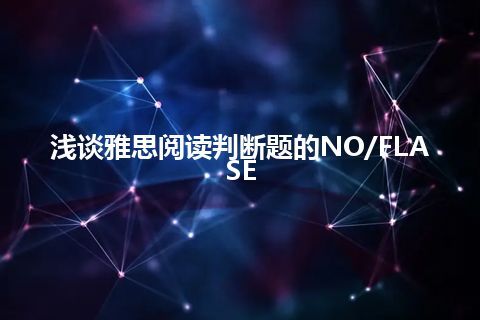以C7T4P1为例:
“Clemmons found a strange hieroglyph on thewall of an Egyptian monument.”【题目】

分析:“Clemmons”在埃及纪念碑的墙上发现了一个奇怪的象形文字。
解题思路:通过显性词人名和特殊名词定位,即“Clemmons和hieroglyph, wall, monument.”
“Now a Californian software consultantcalled Maureen Clemmons has suggested that kites
might have been involved. While perusing abook on the monuments of Egypt, she noticed a
hieroglyph that showed a row of menstanding in odd postures.” 【原文】
答案分析:文意理解:“Clemmons在浏览关于埃及纪念碑的书籍的时候发现了象形文字”。题目是在墙上发现的象形文字,和原文正好矛盾。
以C7T2P3为例:
“Phase I of MIRTP consisted of a survey ofhousehold expenditure on transport.”【题目】
分析:MIRTP项目的第一阶段主要包括对家庭出行开支的调查。
解题思路:“Phase I, MIRTP”的定位以及考点词“household expenditure”的定位。
“Little was known about the transportdemands of the rural households, so Phase I, between
December 1985 and December 1987, focused onresearch. The socio-economic survey of more
than 400 households in the districtindicated that a household in Makete spent, on average, seven hours a day ontransporting themselves and their goods.”【原文】
答案分析:文意理解:“Phase I 的调查主要关于当地400多户家庭平均每天花费7小时用于出行和货物运输。题目内容则强化交通费用而非交通时间,所以与原文矛盾。”
以C7T3P1为例:
“Ants use the same channels ofcommunication as humans do.”【题目】
分析:蚂蚁与人的交流方式相同。
解题思路:“channels of communication ”为定位词;“same”为考点词。
“Ants store food, repel attackers and usechemical signals to contact one another in case of
attack. Such chemical communication can becompared to the human use of visual and auditory
channels.”【原文】
答案分析:文意理解:“蚂蚁使用 “chemical signals”而人 类 使 用 “visual andauditory channels”进 行contact one another. 所以蚂蚁和人类的交流方式并非相同。
依据上述分析,我们可以初步知晓判断题基本都存在考点词。我们考生唯一要做的是找到考点词或其替换词,结合原文得出一致或矛盾或无提及的结论。